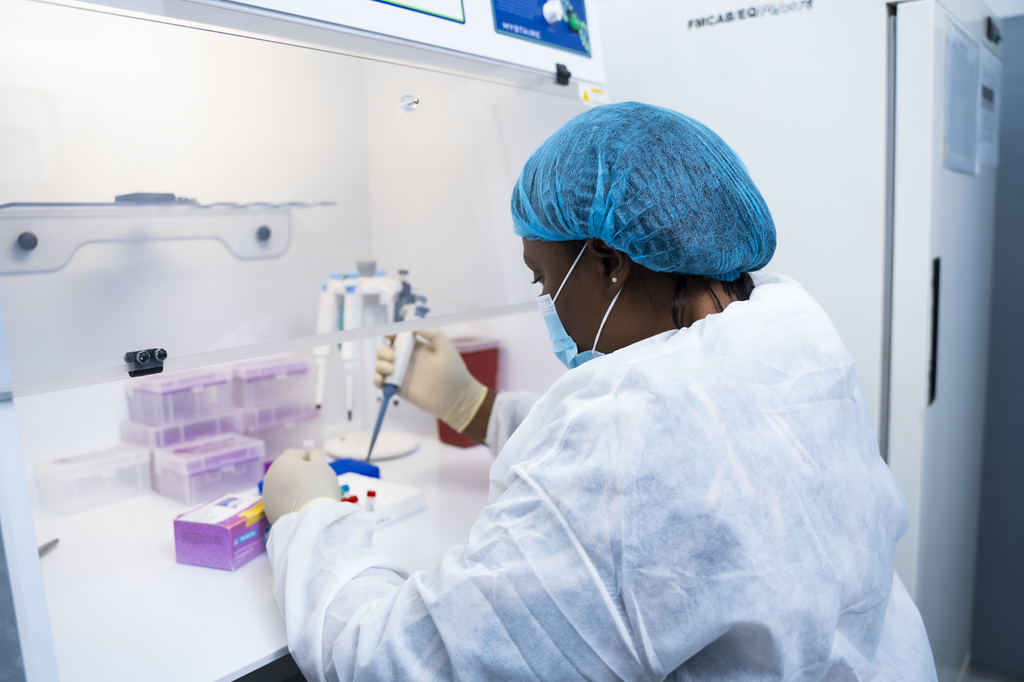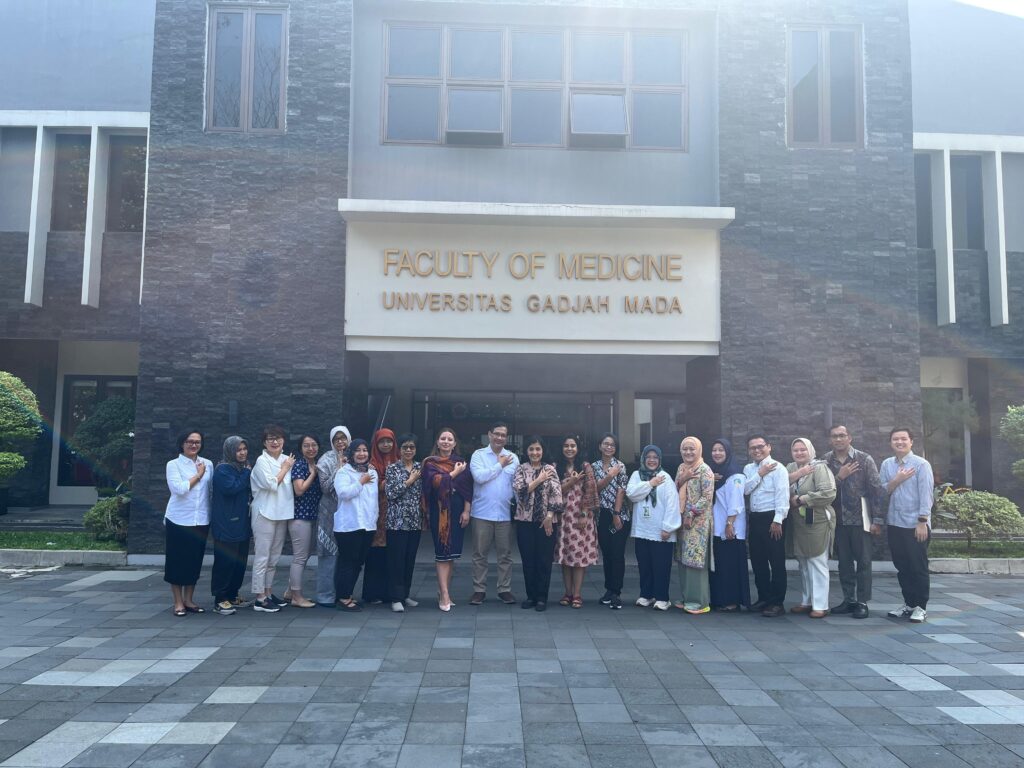
Dr Sanabria is a breast cancer surgeon and former president of the Paraguayan Mastology Society. She recently coordinated the drafting of the Asuncion Guide for Diagnosis and Treatment of Breast Cancer which was presented in February as a C/Can initiative created by a multidisciplinary team of experienced healthcare professionals in the Paraguayan capital.
A long-standing advocate of cooperation between the private and public sectors to improve cancer care, she has been involved in C/Can’s needs assessment in Asuncion that identified the need to standardise treatment and ensure comprehensive cancer care by creating and strengthening multidisciplinary teams to enable them to inform and make decisions and manage patients.
We spoke to Dr Sanabria about recent developments in Paraguay, including the recent launch of the “Guidelines for Diagnosis and Treatment of Breast Cancer.”
What is the current situation regarding breast cancer in Paraguay? Could you tell us the main challenges the country faces in dealing with the cancer burden?
In Paraguay, breast cancer is cancer with the highest incidence in women. It is estimated that there are approximately 1600 new diagnoses per year, but since we do not yet have statistics based on a population-based cancer registry, it is difficult to give exact figures.
Although the incidence is the same as in other countries in the region, we see that the diagnosis in most patients is not made until more advanced stages, particularly after the Covid pandemic, and breast cancer is the leading cause of death from cancer in Paraguayan women.
Many factors explain this, due to the different deficiencies in public health that still exist in our country. Just to mention a few of them, currently, in the public sector, there are no anatomopathological studies of immuno-histochemistry for the study of hormone receptors and HER2, which are fundamental for the beginning of the treatment of any breast cancer.
In addition, the waiting time for a patient to obtain a diagnosis and have access to begin treatment is far above the recommended times.
Only one public hospital offers radiotherapy for all patients in the country. The other radiotherapy centres are private.
Cancer treatment in the country is still highly centralised, although a few more referral centres have emerged in the interior, they still need to be strengthened to offer the same quality of comprehensive care.
What measures need to be taken to reduce the impact of breast cancer in Paraguay?
We have Law No. 6266 of 2018 on INTEGRAL CARE FOR CANCER PATIENTS, the objective of which is to guarantee every person timely and quality access to dignified and comprehensive health care in the face of cancer.
We face many challenges in our country. Health is a right and must be prioritised. In breast cancer, we can say that it is a priority to start with the most basic measures, which means properly implementing a population-based cancer registry (which has already begun but there are still no results). If we do not have a database we cannot even begin to evaluate and project changes.
We must insist on CONTINUOUS awareness campaigns (not just every October) and educate patients, colleagues and staff in order to really reach an opportune and early diagnosis. But it is also necessary to facilitate and speed up access to diagnostic testing for patients.
It is essential and URGENT to have anatomic pathology laboratories with immunohistochemistry testing in the public sector and whose results DO NOT DELAY the diagnosis and start of treatment.
We must improve the time it takes to carry out studies and diagnoses in order to access the most effective treatment.
Equal and timely access to all treatments must also be GUARANTEED.
This means that there should be no shortage of drugs on the list of oncological medicines needed so that there are no interruptions in treatment. There should also be more radiotherapy centres.
It is also very important to strengthen the reference centres in different cities that already have infrastructure and well-trained human resources, providing the supplies and medicines to achieve a true decentralisation that avoids uprooting the patient and her whole family when they have to migrate and leave home to receive treatment.
Another of the main challenges is to get the specialists to understand that multidisciplinary teams are the best way to work to offer the best oncological care to our patients.
Can you tell us a little about the recently created diagnosis and treatment guide for breast cancer?
The guide was developed as a response to the need for therapeutic recommendations based on scientific evidence and adapted to the resources available or feasible in the country so as to provide quality oncological care by orienting and guiding good clinical practice in the diagnosis and treatment of breast cancer.
What was C/Can’s role in developing the guide and what results are you aiming for?
C/Can was the promoter and driver. It provided the orientation for developing and producing the guide and accompanied the entire drafting process and made it possible to distribute it throughout the country. The objective of the guide is to improve the care of breast cancer patients by unifying criteria and making decisions via a multidisciplinary team.
What recommendations would you give to public health authorities in resource-constrained cities on how to establish and use breast cancer data systems to drive continuous improvements in quality of care and inform policy decisions in resource-constrained settings?
First of all, I would tell them to assume the commitment to their country, their city, to address the well-being and health so necessary for development. Healthy and educated people can progress, and progress leads to development. Cancer is an endemic disease and does not respect social classes, but we know that cancer mortality is higher in less developed countries precisely because of the lack of access to a health system that guarantees the necessary treatments.
Good planning of continuous education campaigns on breast cancer, facilitating quick access to essential diagnostic studies and guaranteeing the availability and access to the most effective treatments based on scientific evidence, taking into account the available resources, would be a good way to start.
Going back to your work with C/Can, can you tell us about the preparation of the Guide on How to Develop a Training Program for the Management of Breast Cancer at the Primary Care Level?
This guide that we developed in Paraguay for the Diagnosis and Treatment of Breast Cancer was for secondary and tertiary care.
In order to develop a training program for the management of breast cancer at the primary care level, it was essential to include all the sectors involved in primary care (family physicians, general practitioners, gynaecologists, nurses, health promoters, social workers, patient and family associations, as well as evaluating the resources available and prioritising an education and training campaign for this sector. This was the basis for developing a practical and, above all, applicable guide.
And finally, what do you think is the added value of the guide, who will benefit from it and what do you think its long-term impact will be?
The value of the guide is that it was developed by taking into account the resources that are available in the country, so in theory, it is applicable and will directly benefit patients.
At the same time, it benefits all the target personnel involved in the diagnosis and treatment of breast cancer because it helps to improve clinical practice and facilitates multidisciplinary work.
We hope that the long-term impact of multidisciplinary teamwork using guidelines based on the availability of resources will be normal practice and that we will be able to improve the quality of care and quality of life and decrease the mortality of our patients.





